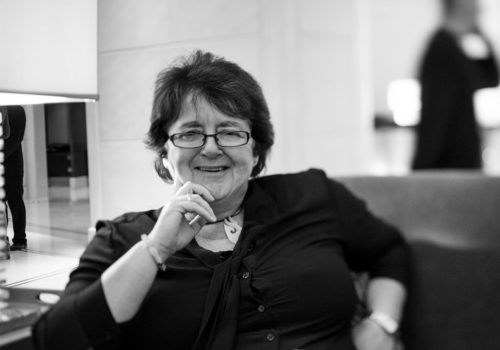In a year when the legitimacy of the photograph as proof is under question once again, the concept of truth and fiction in photography seems an appropriate theme to explore in the 12th annual Auckland Festival of Photography, which runs until the end of June.
Festival director Julia Durkin says the choice of this year’s theme – Truth and Fiction – builds the conversation around digitally constructed imagery, and also allows for the incorporation of photojournalism, providing the Festival’s audience the opportunity to engage with the new as well as the familiar.
This year’s program combines the fictional and imaginary worlds of international artists like Julia Fullerton Batten (UK) Jae Hoon Lee (Korea) and Maria Kapajeva (Russia) alongside “hard hitting factual photojournalism” including exhibits from Angkor Photo Festival.
There is also solid representation from the local photographic community in New Zealand with individual and group shows including Lay of the Land, which features the works of 11 artists. And there’s the new series by this year’s commissioned artist, PJ Paterson, unveiled on opening night.
“Ninety percent of the work in the Festival is by local artists and we are very proud to support New Zealand photography and promote our cultural identity through photography,” says Durkin. “Within the theme there is a nice balance. I think it’s important for our audience to have exposure to international work they wouldn’t get to see as well as New Zealand work that is part of the cultural landscape, contemporary and also archival. It’s a very New Zealand bias program, and that’s what we’re here for.”
Durkin says the Festival’s program is the result of “discussion, research and referral”. The Auckland Festival of Photography is a member of the Asia Pacific Photo Forum and as such Durkin travels to other festivals throughout the region including Angkor in Cambodia, Pingyao in China, and Head On in Australia. “I get to see an awful lot of photography at these other Festivals. I also do portfolio reviews and that’s another great way to see work, get to know what you like and what might work for the festival. My colleague Elaine Smith is the curator of our annual commission so she’s focused on the local talent. It’s about knowing your craft, understanding what will work with the audience and then programming to fit our budget”.
The Auckland Festival of Photography attracts a diverse audience from professional photographers to enthusiasts, amateurs and those who are not involved in photography per se. This year the Festival has also targeted the student demographic with its Future Projections project that features work from all the educational institutes in Auckland. This runs alongside the professional exhibitions and the amateur shows.
“We are there mainly to generate interest in photography with the general public and that’s a very broad remit,” she says. The Festival attracts both the older and younger demographic with the latter group showing a ten percent increase in attendance last year. 80 percent of the Festival’s audience is local.
Auckland has one of the most diverse communities with more than 160 languages spoken in a city with a population of only 1.4 million. “Photography is a universal language and can engage people no matter their mother tongue,” says Durkin.
“The great thing about Festivals is they are conduits for community engagement for the delivery of cultural experience and the building of cultural currency. We are the only photography festival in New Zealand and we have managed to build and maintain it. I’d like to think there are twelve year olds in Auckland that have never known the city without a photography festival.”
This year the Auckland Council granted the Festival long term funding, a breakthrough Durkin puts down to the increased profile of photography in the Asia Pacific. “There is a change in the air now,” says Durkin who credits the collaboration between regional festivals through the Asia Pacific Photo Forum for shifting the focus away from European, American and Japanese photography and putting the spotlight on the Asia Pacific region.
“We’ve positioned ourselves fantastically to be able to capture this shift because we’ve actually led it with our partners in Australia. It’s nice that we are now in a position where the cultural funding agencies in New Zealand are taking note and are now supporting what we are doing because of that. It’s taken us having this network in place and being able to take New Zealand photography off shore for them to suddenly wake up and say hang on that’s amazing, we want to support it,” Durkin concludes.
FESTIVAL
Auckland Festival of Photography
From 28th May to 20th June, 2015
http://www.photographyfestival.org.nz
















